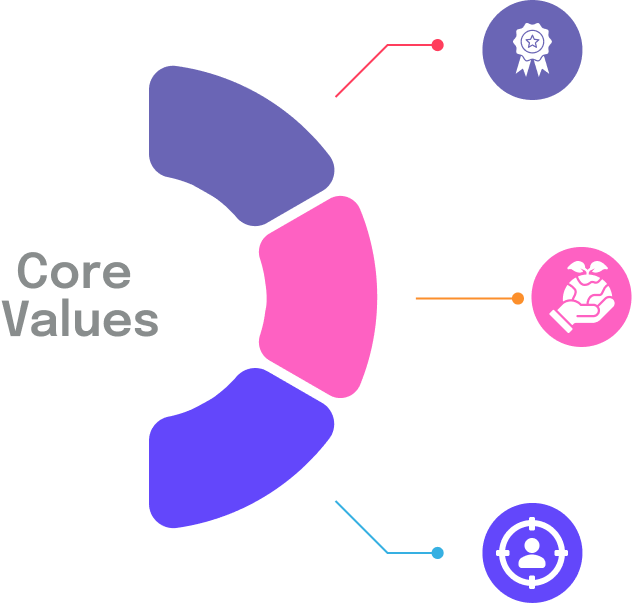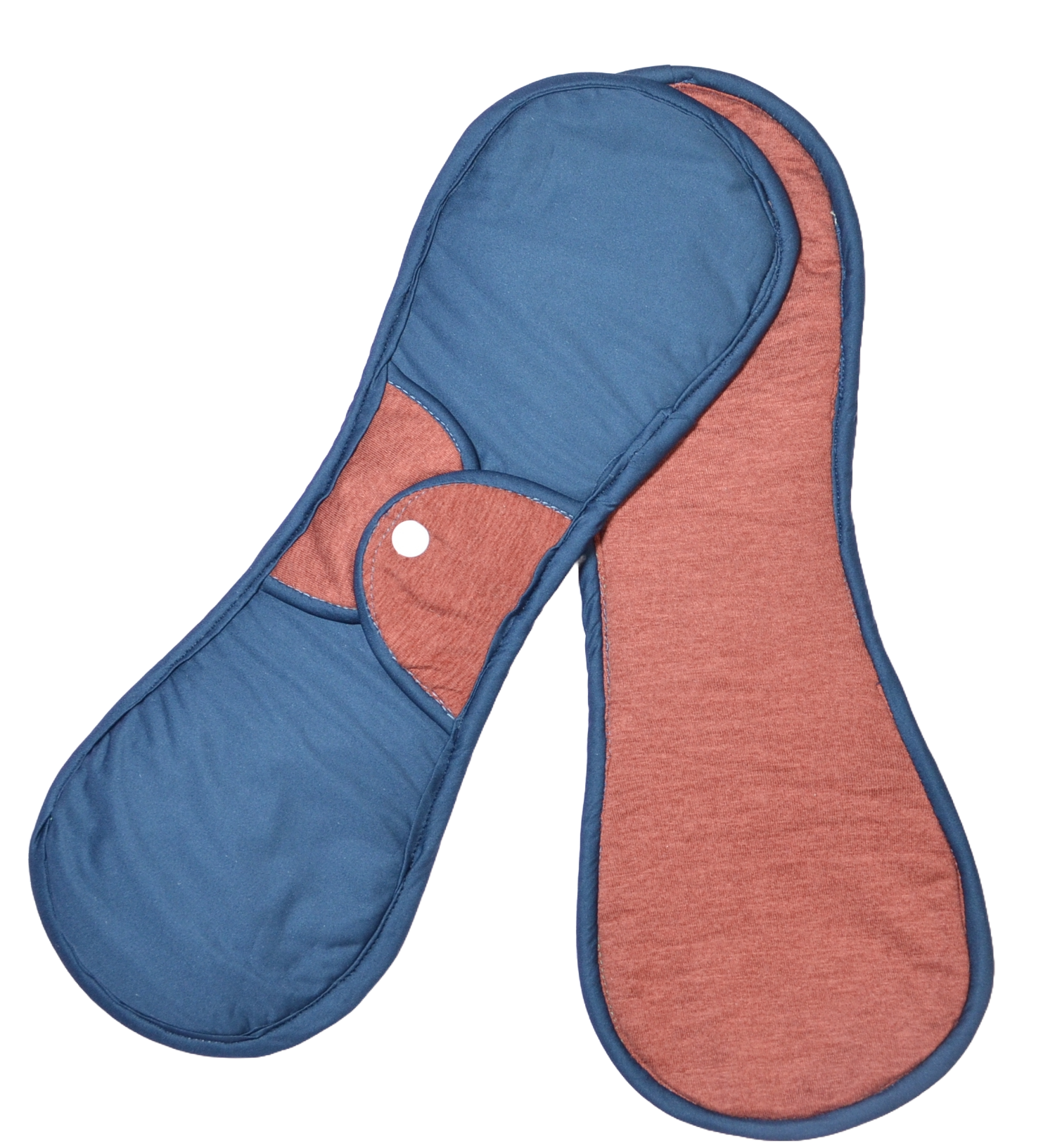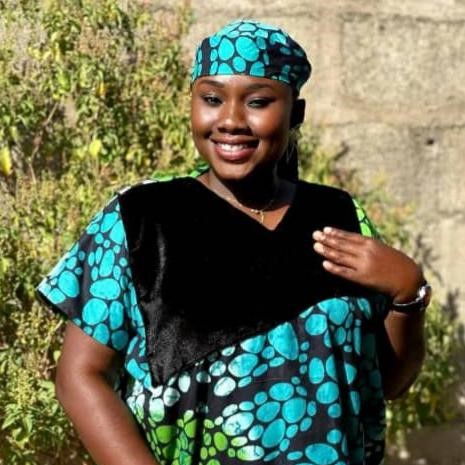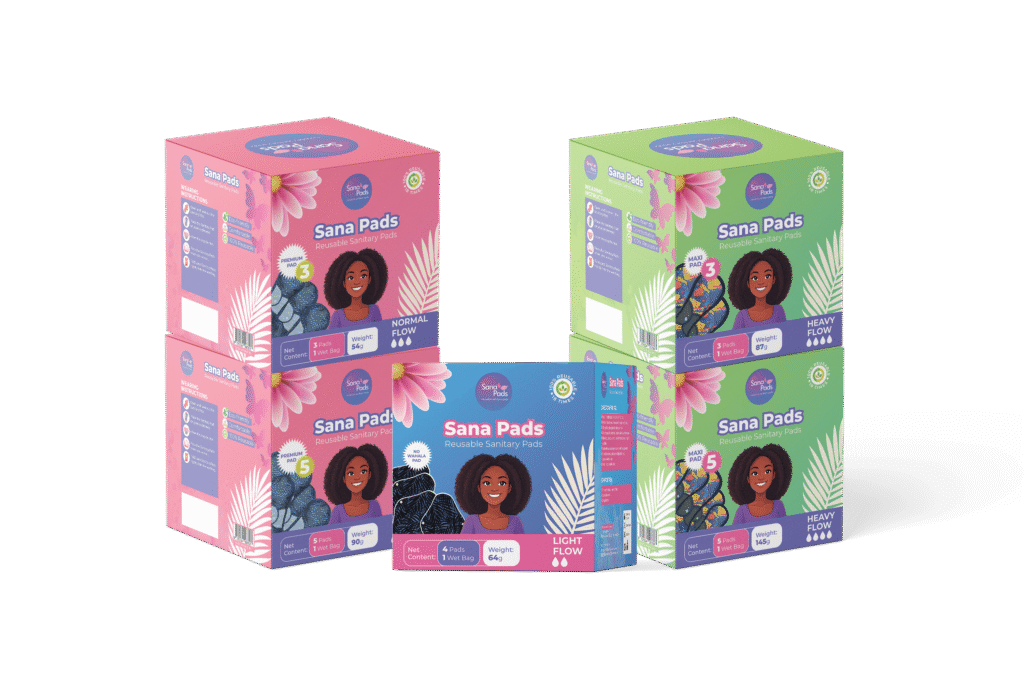What Are Reusable Sanitary Pads and How Do They Work?
The Real Story Behind Reusable Pads
Imagine Amina, a 16-year-old student in Kano, who used to miss three days of school every month because her family couldn’t afford disposable pads. She tried using old cloths, but they leaked and made her feel embarrassed. Then her school introduced reusable sanitary pads through a health program. Today, Amina hasn’t missed a single day of school due to her period in over a year.
Reusable sanitary pads are exactly what they sound like—menstrual pads you can wash and use again and again. Unlike disposable pads that you throw away after one use, these cloth pads are made with multiple layers of absorbent materials that you can clean and reuse for years.
For Nigerian women and girls, this isn’t just about periods—it’s about staying in school, saving money, and managing your health with dignity. When you understand how these pads work, you’ll see why they’re becoming the smart choice for families, schools, and organizations across Nigeria.
Breaking Down How Reusable Sanitary Pads Actually Work
The Science Made Simple
Think of a reusable pad like a well-designed sandwich. Each layer has a specific job:
Top Layer (Against Your Skin): This is usually made from soft, natural materials like bamboo or cotton. It feels comfortable and pulls moisture away from your skin, keeping you dry. Unlike plastic-backed disposables, this layer breathes, so you don’t get that sweaty, uncomfortable feeling.
Middle Layers (The Workhorses): These are the absorbent layers—usually 1 to 5 layers depending on the pad type. They’re made from materials like bamboo fiber, which can absorb many times its weight in liquid. The more layers, the more absorption you get.
Bottom Layer (The Protector): This waterproof layer prevents leaks while still allowing air to flow. It’s not plastic that makes you feel hot and bothered—it’s a breathable, leak-proof barrier that keeps your clothes safe.
All these layers work together to move liquid away from your body, absorb it completely, and prevent leaks. The result? You stay dry, comfortable, and confident all day long.
What Makes Them Different from Disposable Pads
If you’ve ever worn a disposable pad during the hot Nigerian weather, you know how uncomfortable they can get. Disposable pads rely on gel-like chemicals to absorb liquid, and they’re wrapped in plastic that doesn’t breathe.
Reusable pads work differently. They use natural fibers that absorb liquid the way a good towel does—completely and without chemicals. The materials are hypoallergenic, which means they’re less likely to cause rashes or irritation, even if you have sensitive skin.
Plus, while disposable pads get soggy and uncomfortable after a few hours, quality reusable pads stay comfortable for 4-8 hours because they’re designed to keep moisture away from your skin.
About us

1. Excellence
2. Environmental Sustainability
3. Customer-Centric
serve.
Types of Reusable Pads (Finding Your Perfect Match)
Light Flow Options
No Wahala Pads are perfect for those light days at the beginning or end of your period, or as backup protection when you’re not sure when your period will start. With one leak-proof layer and one absorbent layer, they’re slim and lightweight—perfect for keeping in your school bag or handbag for emergencies.
These pads are great for young girls just starting their periods, or for women who want discreet protection during light flow days. They’re also perfect for those “just in case” moments when you’re traveling or staying overnight somewhere.
Regular Flow Protection
Premium Pads are the workhorses of menstrual protection. With one leak-proof layer and three absorbent layers, they handle regular flow beautifully. These are perfect for school days, work, or any time you need reliable protection that won’t let you down.
Many of our customers tell us these pads are perfect for their daily routine. They’re comfortable enough for long school days, absorbent enough for regular flow, and reliable enough that you can focus on your studies or work without worrying about leaks.
Heavy Flow Solutions
Maxi Pads are designed for those heavy flow days when you need maximum protection. With one leak-proof layer and five absorbent layers, they’re like having a personal bodyguard for your heaviest days.
These are perfect for overnight protection, heavy flow days, or for women who experience flooding. The extra layers mean you can sleep soundly, attend long meetings, or spend hours in class without worrying about changing your pad.
The Real Benefits That Matter to You
Money in Your Pocket
Let’s talk numbers. The average Nigerian woman spends about ₦700-₦1,500 per month on disposable pads. That’s ₦8,400-₦18,000 per year, every year.
A set of quality reusable pads costs in retail between ₦3,000-₦5,000 upfront but lasts for 2-3 years with proper care. That means you could save ₦25,000-₦50,000 over three years. For a family with multiple daughters, or a school supporting many girls, the savings add up quickly.
For NGOs and schools buying in bulk, the savings are even more dramatic. A bulk order of 50 packs comes with significant discounts, making it possible to support more girls with the same budget.
Better for Your Health
Commercial disposable pads often contain chemicals, fragrances, and bleaches that can irritate sensitive skin. Many women report getting rashes, infections, or uncomfortable reactions from these chemicals.
Reusable pads made from natural materials like bamboo and cotton are hypoallergenic and chemical-free. They allow your skin to breathe, reducing the risk of infections and irritation. The natural fibers are gentler on your skin, especially during those sensitive period days.
For women who suffer from recurring infections or skin sensitivity, switching to reusable pads often provides relief. The breathable materials and chemical-free composition create a healthier environment for your body.
Environmental Impact
Every disposable pad takes 500-800 years to decompose. In Nigeria, where waste management is already challenging, this creates a serious environmental problem. A woman uses about 11,000 disposable pads in her lifetime—that’s a lot of plastic waste.
One set of reusable pads can replace thousands of disposables. When you choose reusable pads, you’re not just saving money—you’re helping keep Nigerian communities cleaner and reducing the plastic waste that affects our environment.
For schools and organizations with environmental goals, providing reusable pads is a powerful way to demonstrate commitment to sustainability while supporting girls’ education.
Our Reusable Sanitary Pads
Light Flow
Thinner and ligher pad designed for
the last days of your period.
Contains leakproof layer at the back.

Normal Flow


How to Use Reusable Pads (Step-by-Step Guide)
First Time Setup
When you get your new reusable pads, wash them once before first use. This helps remove any manufacturing residue and makes them more absorbent. Don’t worry if they seem less absorbent at first—they reach full absorption capacity after 2-3 washes.
If you’re switching from disposables, start using your reusable pads on a lighter flow day to get comfortable with how they feel and work. This helps you adjust to the different sensation and build confidence.
Daily Use Tips
Position the pad in your underwear just like you would a disposable pad. The wings (if your pad has them) wrap around your underwear to keep the pad in place. Make sure the pad sits comfortably—it shouldn’t bunch up or feel twisted.
For school or work, carry a spare pad in a small pouch or bag. When you need to change, simply remove the used pad, fold it up, and store it in your pouch until you can wash it. Put on your fresh pad and continue your day.
Change your pad every 4-8 hours depending on your flow. Heavy flow days might need more frequent changes, while light days can go longer. Listen to your body—you’ll quickly learn what works best for you.
Washing and Care (Keeping Them Fresh and Long-Lasting)
Quick Rinse Method
As soon as you remove a used pad, rinse it with cold water. Cold water prevents stains from setting and removes most of the blood immediately. Don’t use hot water—it can set stains and make them harder to remove.
If you can’t wash immediately, store the used pad in a container with cold water until you’re ready to wash. This keeps the blood from drying and makes washing easier later.
Proper Washing
You can wash reusable pads by hand or in a washing machine. For hand washing, use mild soap or detergent and gently scrub the pad. For machine washing, use cold water and a gentle cycle.
Avoid using fabric softeners or bleach—they can reduce the absorbency of your pads. If you need to remove stubborn stains, try soaking the pad in cold water with a little salt or hydrogen peroxide before washing.
Storage and Maintenance
After washing, air dry your pads completely before storing them. In Nigeria’s humid climate, make sure they’re completely dry to prevent mold or odors. You can also use a tumble dryer on low heat if needed.
Store clean, dry pads in a clean, dry place. A cloth bag or dedicated drawer works well. Proper storage helps your pads last longer and stay fresh.
Time to get involved
Common Concerns and Myths (Let's Clear the Air)
Will They Actually Work for Heavy Flow?"
This is one of the most common questions we hear, especially from women who have heavy periods. The answer is yes—but you need the right pad for your flow.
Our Maxi Pads are specifically designed for heavy flow. With five absorbent layers, they can handle even the heaviest days. Many of our customers with heavy periods tell us they feel more secure with reusable pads than they ever did with disposables.
The key is choosing the right pad for your flow and changing it when needed. Heavy flow doesn’t mean reusable pads won’t work—it just means you might need a higher-capacity pad and more frequent changes on your heaviest days.
"Are They Hygienic?"
Some people worry that reusable pads aren’t as clean as disposables. This concern usually comes from not understanding how to care for them properly.
When you wash reusable pads correctly—with soap and water, then dry them completely—they’re just as hygienic as disposables. In fact, they can be more hygienic because they don’t contain chemicals that can disrupt your body’s natural balance.
The key to hygiene is proper washing and drying. Clean pads are hygienic pads, whether they’re reusable or disposable.
"What About Leaks?"
Leaks happen with any type of pad if it’s not the right size, not positioned correctly, or worn too long. The good news is that quality reusable pads are actually less likely to leak than disposables when used correctly.
Make sure your pad fits properly and isn’t too small for your flow. Position it correctly in your underwear. Change it regularly—don’t try to push it beyond its capacity. With proper use, reusable pads provide excellent leak protection.
Why Sana Pads Are Making a Difference
At Sana Pads, we don’t just make reusable pads—we’re part of a movement to end period poverty in Nigeria. Our pads are manufactured right here in Nigeria, which means we understand the local climate, needs, and challenges.
Our team, including Monica (Head of Production), Helen, Blessing, and Grace (our skilled tailors), and Margaret (Head of Operations), brings years of experience and dedication to every pad we make. We’re not just selling a product—we’re building a solution that works for Nigerian women and girls.
Through our work with schools, NGOs, and health organizations, we’ve already supported over 900 women directly and kept more than 1,144 pads in the hands of those who need them most. Every pad we make represents a girl who can stay in school, a woman who can manage her health with dignity, and a family that can save money for other important needs.
Our Maxi Pads are specifically designed for heavy flow. With five absorbent layers, they can handle even the heaviest days. Many of our customers with heavy periods tell us they feel more secure with reusable pads than they ever did with disposables.
The key is choosing the right pad for your flow and changing it when needed. Heavy flow doesn’t mean reusable pads won’t work—it just means you might need a higher-capacity pad and more frequent changes on your heaviest days.
Testimonials
Women around the world patronize Sana

“Buying disposable pads every month really added up, so I thought I’d give Sana Pads a try. I was surprised by how soft they are, and they work well for long days at university.
Washing them is simple, and I haven’t had to buy new pads in months, which has saved me money. I also like that they’re more eco-friendly. It feels good to have an option that’s both affordable and better for the environment.”
Women around the world patronize Sana

At first I felt irritated using a washable sanitary pads,I decided to give it a try and to my greatest surprise,it was very comfortable and very easy to wash, you can even go about your daily activities without fear of getting blood stain in public, I wanna say a Big shout out to SANA PADS!!
Divine Favour Eweka
Women around the world patronize Sana

I’ve tried several pad brands over the years, but Sana pads truly stands out. From the first use, I noticed the difference — soft on the skin, super absorbent, and incredibly comfortable. Even on my heaviest flow days, Sana pads holds up so well. What I also love is how breathable and skin-friendly the material is. If you’re looking for a pad that combines comfort, reliability, and quality, I highly recommend giving Sana pads a try.
Racheal Tarttive
Women around the world patronize Sana

I’m absolutely loving Sana reusable pads! They make me feel so relaxed and at ease during my periods. Plus, they’ve significantly reduced the cost and stress of buying disposable pads every month. Kudos to Sana for creating such an amazing product – I’m a forever fan!
Florence Kigbu
Women around the world patronize Sana

Sana Pad is very good, makes u feel comfortable and free, i love the pads the best ever!.
Susan Eweka
Women around the world patronize Sana

Sana pads have been a game-changer for me! Comfortable, eco-friendly, and cost-effective, they’ve given me confidence and peace of mind during my periods. No more worries about leaks or waste – Sana’s got me covered! Highly recommend!
Blessing Augustine David
Women around the world patronize Sana

I’ve tried several reusable pad brands, but Sana stands out for its exceptional quality, comfort, and durability. The design is thoughtful, and the materials are gentle on my skin. Switching to Sana has not only reduced my environmental footprint but also saved me money in the long run. I’m grateful for this sustainable solution!
Blessing Madubuike
Getting Started with Reusable Pads
Choosing Your First Kit
If you’re new to reusable pads, our Starter Kit is perfect. It includes three Premium Pads and a storage pouch—everything you need to get started. This gives you enough pads to rotate while washing, so you’re always prepared.
For organizations supporting multiple girls, our bulk packages offer significant savings. Schools and NGOs can order Full Protection Kits or Heavy Bleeder Kits depending on their needs, with special pricing for orders of 50 packs or more.
Making the Switch
Don’t feel like you have to switch completely overnight. Many women start by using reusable pads at home and gradually transition to using them everywhere. This helps you get comfortable with the routine and build confidence.
In your first month, you might notice some differences—reusable pads feel different from disposables, and you’ll need to establish a washing routine. This is normal. Most women find that after a month or two, they prefer reusable pads and wonder why they waited so long to make the switch.
Conclusion: Your Path to Better Menstrual Health
Reusable sanitary pads work by combining smart design with natural materials to give you comfortable, reliable protection that lasts for years. They’re not just better for your wallet and the environment—they’re often better for your health too.
Whether you’re a student trying to stay in school, a mother looking for better options for your daughters, or an organization supporting girls in your community, reusable pads offer a sustainable solution that actually works.
The science is simple, the benefits are real, and the impact is lasting. When you choose reusable pads, you’re not just choosing a menstrual product—you’re choosing dignity, sustainability, and freedom.
Ready to make the switch? Explore our Starter Kit or contact us to learn about bulk options for your organization. Every girl deserves to manage her period with confidence and dignity—and reusable pads make that possible.

Author: Margaret Ochegbudu

